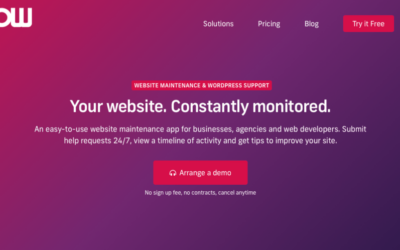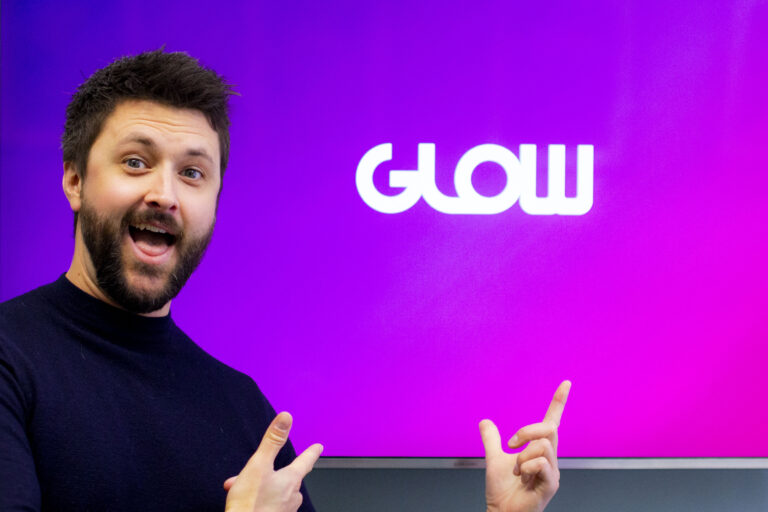In 2020, everyone’s realised the value of a website – but many aren’t using that opportunity to its fullest.
Phil Storey, founder of WordPress website maintenance solution Glow, explains how to make the most of a website, and why you have to treat it like a conversation with users.
There’s no doubt about it, 2020 has been the year when even the businesses with zero prior digital presence bit the bullet and invested in a website – even if it was out of necessity. However, that doesn’t mean people’s understanding of how much influence a website can have on digital growth has changed.
I’ve heard and seen many people throughout the pandemic say, “I need a website if I want my customers to know I exist,” which is, of course, a step in the right direction. It’s just not the right mindset.
Websites are not digital business cards, and if businesses want to achieve digital growth in 2021, this needs to be realised.
Websites are like conversations
If I’m ever in a situation where I need to explain what a website really is and how it should be used, I use this analogy; websites are like conversations. They’re a part of your efforts to open communication between you and your existing customer.
When you think about how a conversation begins, there’s usually a common interest and something about you has made the other person want to talk to you. When they do, to keep the conversation going, you need to be interesting, be polite, listen, engage, respond and act appropriately.
If we take this analogy and apply the concepts to what your website should be doing, we get a clearer picture of how to ensure it does.
Attracting the conversation
If you want customers to ‘start the conversation’ with your business, your website firstly needs to be visible! There’s a whole other conversation to be had here about the use of relevant digital marketing efforts to drive traffic, but it’d be wrong of me to skip to the next section without recognising this.
You could put all the effort in the world into making your website look great and be easy to use, but if you’re not actively sending people to it, what’s the point?
Listen and respond
When potential customers visit your website, it needs to respond to their needs – be easy to navigate and quick to load. They want to know that you’ve thought about their experience and are ready to listen. How can you achieve this? It’s a good start to make sure the loading speed of your web pages is lightning fast. There’s lots of ways to do this, such as by optimising images, minifying files, and enabling browser caching.
In order to make ‘the conversation’ easy, your site will also need to be well mapped out. Get a group of people in your network to test it out and note the results; is it easy to find what they’re looking for? Is there too much content that doesn’t really have any context? Test, measure and improve… always.
Act accordingly and be polite
Obviously, this is a metaphor! What I am actually referring to is how secure your website is.
Be aware of the threat of website hacks and the damage this could do to your business. Read up on ways to make your site more secure and consider hiring experts to help you with this.
It really does make sense to invest what is usually only a small amount to make sure your website – that is representing your business 24/7 – is well-protected and looked after.
You might think that website hacks against small businesses are rare, but in fact, a recent analysis I did with the team at Glow showed that we’d prevented 52,589 attempted suspicious logins to businesses’ websites in just one month. When we scaled it, it worked out that the average number of attempted suspicious logins to a WordPress website per day was 3.5 billion!
Be interesting
This one is pretty self-explanatory. You wouldn’t enter a conversation and not really say anything, so why have a website and never upload any content? Yes, it can be time-consuming, but it’s worth the investment.
Taking care of your website and keeping it regularly updated demonstrates to your customer that you are invested in them and their initial journey. It symbolises your interest in keeping ‘the conversation’ going with them.
Through Glow, we get thousands of requests to upload content, but we also see the flipside of businesses going weeks and weeks without even logging in to their websites. It’s an incredibly powerful tool to drive your business forward – so make sure you’re making the most of it!
Engage
No, I don’t want you to propose to your customers. Engage is something we want them to do. Whether that’s by phoning you, buying something, beginning a free trial or using the contact form to get in touch with you.
Chances are, if you’ve got the points above covered, they’ll be biting to get in touch. However, that could fade in an instant if your contact form isn’t working or the free trial button leads to a broken page.
The final cog? Website maintenance
I’ve worked in the industry long enough to know that people don’t see the value of website maintenance without education. And that makes sense, right? We can’t expect accountants and builders and architects – or whatever the business is – to understand the ins and outs of website maintenance and why it’s so important. It’s our job to educate them.
We know how effective your website can be in driving business growth. However we also know that a website that’s maintained properly, and really given the attention it deserves in terms of helping promote your business and communicate with your target audience, will drive that growth far quicker.
Website maintenance is a bit like the car mechanic of the digital world. It’s a commitment by you to ensure that your website is free of any issues and mistakes, and to keep it secure, efficient and relevant. It needs to be done on a consistent basis so that your website remains healthy, secure, quick-to-load and so that it complements digital marketing activity to ensure a positive ROI.
So I leave you with one final thought. Will you leave your business card on the table in the hope someone will pick it up, or will you take steps to start real conversations with your target audience?











